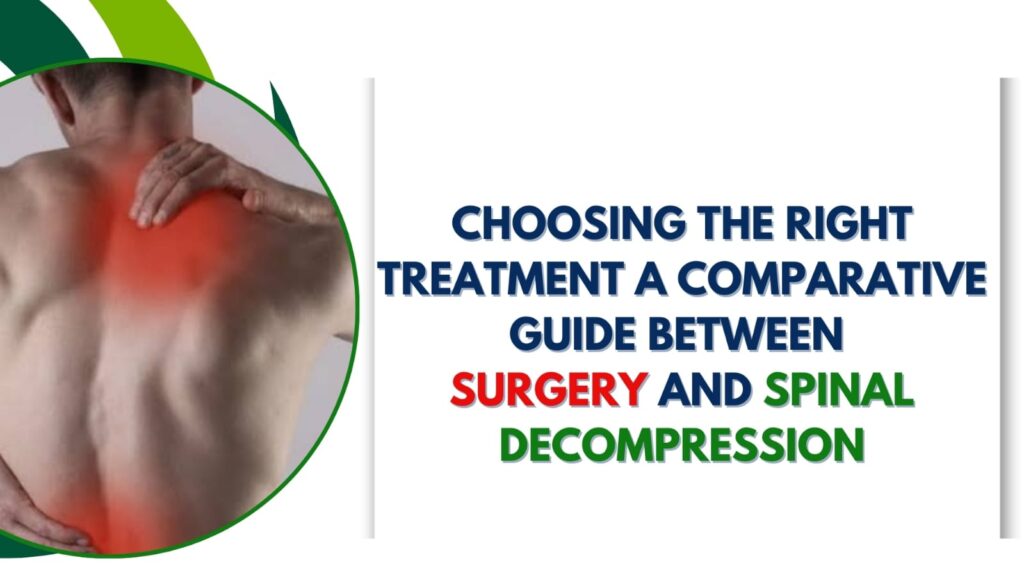Chronic back pain and spinal disorders often require either surgical intervention or spinal decompression treatment. Each option has distinct pros and cons, which you must understand to make informed treatment decisions.
Understanding the Basics
Let’s first discuss how the spinal decompression procedure is different from a spine surgery.
Surgery
From minor interventions using small incisions to complex operations, each spinal surgery varies in how invasive it can be. The most common surgeries include discectomy (removal of a herniated disc), laminectomy (removal of a part of the vertebra), and spinal fusion (joining two or more vertebrae). Surgery can help relieve pressure on the spinal cord or nerves, stabilise the spine, and reduce pain.
Spinal Decompression
Spinal decompression is a non-surgical treatment that reduces pressure on spinal discs and nerves. It creates negative pressure between the vertebrae, which helps the herniated or bulging disc to retract and heal.
Effectiveness
Both types of treatments can be effective based on different factors.
Surgery
Surgery is typically considered when other treatments fail to ease pain. For conditions such as severe herniated discs or spinal stenosis, surgery can be highly effective. Many patients experience improved function and pain relief, although success depends on the specific conditions, the patient’s health, and the surgeon’s expertise.
Spinal Decompression
Spinal decompression shows promise for conditions such as disc herniation and sciatica. Many patients report significant pain reduction after treatment. While some studies suggest promising outcomes, more research is needed to assess the long-term effectiveness across various conditions.
Risks and Recovery
This is an area where an invasive procedure like surgery proves to be a difficult option for many patients.
Surgery
Spinal surgery carries risks, including infections, bleeding, nerve damage, and complications with anaesthesia. Recovery times can vary widely, with some patients regaining normal function in weeks, while others may take months. Postoperative physiotherapy is often recommended to strengthen back muscles and prevent future issues.
Spinal Decompression
The non-invasive nature of spinal decompression makes it a safer option. Side effects are usually minor, such as mild soreness during or after treatment. Most patients can resume normal activities immediately, though successful outcomes often require multiple sessions over several weeks.
Cost
For most patients, basic cost/benefit analysis is crucial when choosing the medical treatment.
Spinal Surgery
Surgical procedures are costly, involving hospital stays, surgeon fees, and post-surgical care. Insurance coverage can vary, and out-of-pocket expenses may be high, especially if complications arise.
Spinal Decompression
Spinal decompression is generally more affordable than surgery. Treatment costs vary depending on the provider and the extent of treatment needed, but it remains a less expensive option.
Conclusion
Choosing between surgery and spinal decompression depends on the specific condition, pain levels, and overall health. Surgery is often necessary in severe cases, while spinal decompression offers a non-invasive alternative for many patients. Consulting a healthcare provider is crucial for making the right decision based on individual needs.
About ANSSI:
ANSSI Wellness focuses on improving the quality of life for patients suffering from spinal issues, aiming to provide relief where other conventional treatments have failed. Through advanced non-surgical spinal decompression treatment, ANSSI is committed to helping patients avoid surgery and recover in a safe, effective, and compassionate environment.



